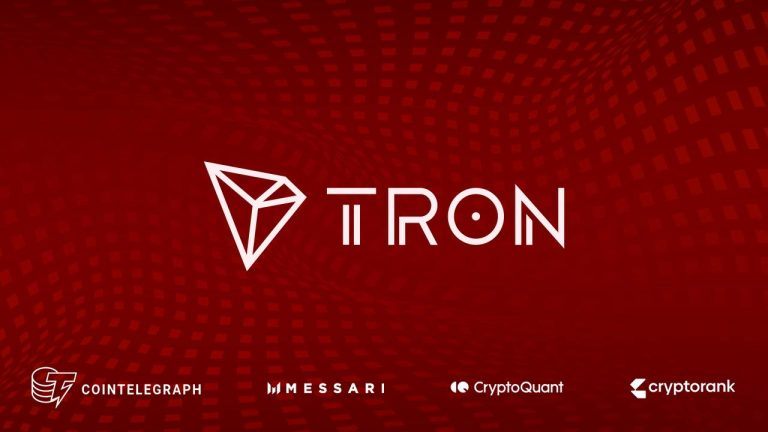Key Takeaways:
- Quantum computing poses a potential threat to inactive Bitcoin wallets, particularly older address types.
- The Bitcoin community is likely to adopt quantum-resistant address standards before a significant threat emerges.
- Return of lost Bitcoin can have an impact on the behavior of markets, but the amount of the capped supply of 21 million remaining is still the same.
The crypto community is divided on this topic. This is due to the recent statements about the effects of quantum computing on Bitcoin made by Tether’s CEO Paolo Ardoino. Does this mean long-lost Bitcoin wallets could be unlocked, or is this just another overblown threat? Let’s explore further.
Tether CEO’s Prediction: Quantum Computing and Lost Bitcoin
Paolo Ardoino says that qubit computers, if they are advanced enough, can be used to breach and open the trapped and inactive Bitcoin wallets. This suggests that Bitcoin in these wallets, possibly even belonging to Satoshi Nakamoto, could be reintroduced into the market.
“Any Bitcoin in lost wallets, including Satoshi (if not alive), will be hacked and put back in circulation,” Ardoino stated in an X post.
Even though this is a future worry to be considered, it is worthy to note that Ardoino himself has stressed that the state of quantum computing is “still very far from any meaningful risk of breaking Bitcoin cryptography.” The opinion of this phrase is that there is a long period that must pass until this technological capability represents a real risk.
Prediction.
Quantum computing is still very far from any meaningful risk of breaking Bitcoin cryptography.
Quantum resistant addresses will eventually be added to Bitcoin before there is any serious threat.All people alive (and that have access to their wallets) will move…
— Paolo Ardoino
(@paoloardoino) February 8, 2025
What is Quantum Computing and Why All the Hype?
Quantum computing is a revolutionary field that leverages quantum mechanics to perform complex calculations beyond the reach of classical computers. Classical computers store information as bits, which represent 0 or 1, whereas quantum computers use qubits. In the case of qubits, they might exist in a superposition of states, that is, 0, 1, or both, and quanta can represent them at the same time as well. Because of this, quantum computers can solve the hardest problems that even the world’s strongest traditional computers can’t do.
The Dual-Edged Sword: Risks and Opportunities for Bitcoin
The rise of quantum computing presents both threats and opportunities for Bitcoin’s future adaptation.
Potential Risks
Dormant Bitcoin wallets could become a serious target, and older address types, particularly Pay-to-Public-Key (P2PK) addresses, are particularly vulnerable to quantum attacks.
Risk Mitigation
The Bitcoin community is expected to proactively transition to quantum-resistant addresses before quantum computers become a real threat. Users who have already established new keys for wallet security will have to agree to upgrade their security measures.
Quantum-Resistant Addresses: A Proactive Defense
Many believe that quantum computing is a real threat, but there is optimism that the crypto ecosystem will swiftly adopt quantum-resistant solutions.
Existing Precedents for Upgrades
Bitcoin has a history of upgrading its protocol to enhance security and scalability. Moving to quantum-resistant addresses might be a push that replicates early Bitcoin updates and would definitely need to get a consensus from the community.
The SegWit upgrade serves as a landmark example of Bitcoin’s ability to evolve and improve. The progression of the technology started in 2017 when SegWit was implemented. It handled transaction malleability, improved the capacity for transactions, and thus facilitated the invention of the Lightning Network, which is a Layer-2 solution. This, in turn, certified the fact that Bitcoin has been very inventive on the road to success.
Market Dynamics: How may Quantum Computing Be Able to Chase Bitcoin’s Landscape?
The impact on market dynamics could be significant if quantum computing successfully unlocks dormant Bitcoin wallets:
- Increased Supply: The projected added supply will more likely than not bring along the increment of supply, which impacts its scarcity narrative and potentially affects Bitcoin’s value. A clear indication is that previously inaccessible Bitcoin has already been reintroduced to the market at higher prices due to increased supply or lower demand.
- Market Volatility: Those who recover lost Bitcoins may choose to sell them, potentially causing price instability.
- Investor Sentiment: The idea that Bitcoin could be compromised by quantum computing may lead to a crisis of confidence among investors; alternatively, some may see it as a unique opportunity to acquire Bitcoin at a lower price.
Voices of Dissent: Conflicting Perspectives
Ardoino is not the only one who thinks in this way. Several analysts express concern that the reintroduction of Bitcoin by Satoshi Nakamoto could provoke a “crypto winter,” leading to market oversupply and a decline in prices.
Billionaire investor Chamath Palihapitiya concurs with Ardoino as he recommends that those with the most vested interest in Bitcoin have a plan of action to deal with the very real dangers that quantum computers may pose. It reiterates the fact that uncertainty and planning are necessary within the Bitcoin community.
More News: The Quantum Computing Threat for Satoshi Nakamoto’s 1 Million Bitcoins
Bitcoin’s Unchangeable Core: The 21 Million Cap
The reality is that quantum computing could introduce new challenges and opportunities. Nonetheless, Ardoino underlines the only stable component in Bitcoin, i.e., those 21 million capped supply coins. “Only 21 million bitcoin anyway. Nothing can change that. Not even quantum computing. That’s the real key important message. Bitcoin is the best asset in the world.”
The Path Forward: Adaptability is Key
The potential threat of quantum computing to Bitcoin is not a straightforward issue, and it will continue to be a topic of debate. Rather than assuming certainty about the future, it is crucial to actively prepare for various scenarios. With adaptability and a proactive approach, Bitcoin will be able to cope with new challenges and at the same time, become an engine for future growth. However, quantum computing is not only a threat but also presents new opportunities for innovation. The issue of quantum computing exhausts at the level where technology is in evolution.
The post Can Quantum Computing Unlock Lost Bitcoin Wallets? A Threat or An Opportunity? appeared first on CryptoNinjas.

You can get bonuses upto $100 FREE BONUS when you:
💰 Install these recommended apps:
💲 SocialGood - 100% Crypto Back on Everyday Shopping
💲 xPortal - The DeFi For The Next Billion
💲 CryptoTab Browser - Lightweight, fast, and ready to mine!
💰 Register on these recommended exchanges:
🟡 Binance🟡 Bitfinex🟡 Bitmart🟡 Bittrex🟡 Bitget
🟡 CoinEx🟡 Crypto.com🟡 Gate.io🟡 Huobi🟡 Kucoin.





















Comments